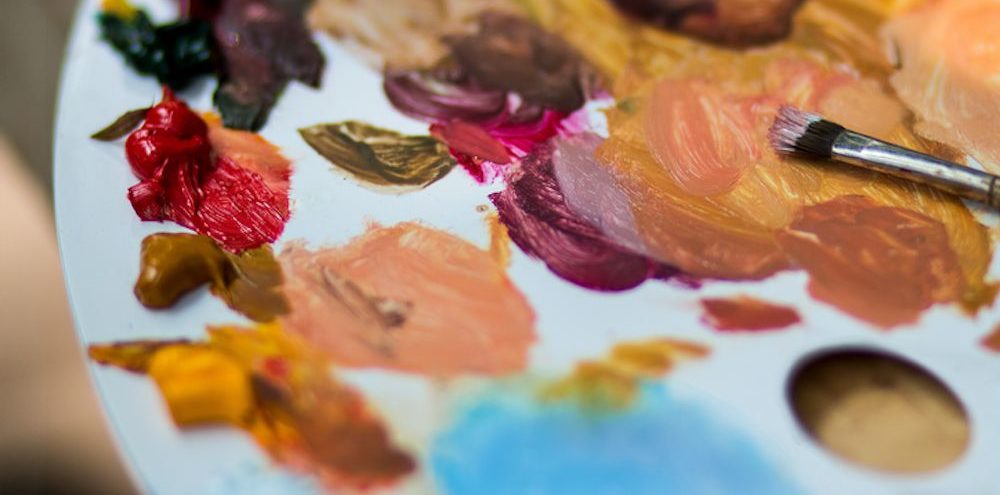Don’t be intimidated any longer—come learn to paint. This class will unfold the mysteries of painting by introducing students to the basics: selecting materials, setting up a palette, handling paint, and composing a picture. The class will emphasize learning to see what you wish to paint with the goal of rendering form clearly in terms of color and design. Come to the first class ready to paint.
CAW does not supply paint, brushes, or canvas. Please see the list below for what students need to bring.
Tuition includes $10 materials fee for basic supplies from CAW.
School Policies
Students who withdraw 48 hours prior to the first class are eligible for a refund or credit toward another class, less a $25 registration fee.
Please click here for more details.
Term: Fall 2024
Suggested Ages: 18+
6 sessions: $334.00; Capacity: 15
Registration closed
RECOMMENDED COLORS: Acrylics - recommend “medium” or “artist” grade color Oils - student grade colors acceptable. (Difference is in pigment quality, tinting strength, and covering ability) Cadmium red medium (hue) Cadmium yellow light (hue) Yellow ochre Burnt sienna Raw umber Ultramarine blue Titanium or Zinc white (large tube) OPTIONAL COLORS Alizarin crimson Viridian green Cerulean or manganese blue Violet-any MEDIUMS (OIL ONLY): Turpenoid (blue can only) or other ODORLESS thinner 2oz. Liquin or Galkyd Medium (ACRYLIC ONLY) 4oz. Polymer Medium (Matte or Gloss) 1 tube Retarding Medium A spray mister is recommended to keep palette and painting surface wet. SUGGESTED BRUSHES AND TOOLS (any variety of sizes and shapes will do) Oil and acrylic brushes are long handled. White bristle and synthetic brushes are least expensive Flat (long, square cut) natural white bristle, 3/4” Filbert (flat, round cut) sable or synthetic, ½” Round sable #4 or #6 Sash (Chinese bristle “house painting” brush) 2” or 3” 3” or 4” Spatula type Palette Knife (not “Painting Knife” with round stem) Blade should be flexible and not rigid. Be sure to check that it bends along the blade and not at the handle 14”X18” MINIMUM Palette (disposable sheets, wood or plexiglass) 12”X16” (or similar size) pad canvas paper Paper towels Masking tape Notes on the Paints: Students are free to choose between oil and acrylic media. Oil paint is the more traditional medium. It is bound with linseed, or similar oils, and thinned with turpentine and/or mineral spirits. It retains the brush mark, is very flexible, easy to blend and dries relatively slowly: 24 hours to several days for some colors. For those that are sensitive to solvents, water-based oils are an option. They retain many of the handling characteristics of traditional oils yet are less toxic and easier to clean up. They are not yet available in as wide a variety of colors as regular oils. For those that are sensitive and prefer to use oil color, disposable rubber gloves are recommended. Acrylic paint is generally less expensive. Acrylic colors are water based and dry fairly rapidly. Retarding, or acrylic glazing medium may be used to extend the drying time. Acrylic does not retain the texture of the brush mark as effectively as oil and blending effects can be difficult to achieve. Acrylic is available in a wide variety of densities and can be mixed with a broad variety of acrylic polymer mediums. Matching mixed colors can be difficult as the acrylic dries darker than when it is mixed and applied. Paints are available in “professional” and “student” grades. Student grade oils are recommended for those on a tight budget. They often use less costly “substitute” pigments and/or possess less pigment strength. They generally perform as well as professional grade colors. Student grade acrylics – Liquitex Basics, Soho Urban Artist, Artist's Loft colors should be avoided. Their performance characteristics (spread-ability, opacity) are far inferior to the artist’s grade color and can frustrate, rather than enable, the intentions of the student artist.


